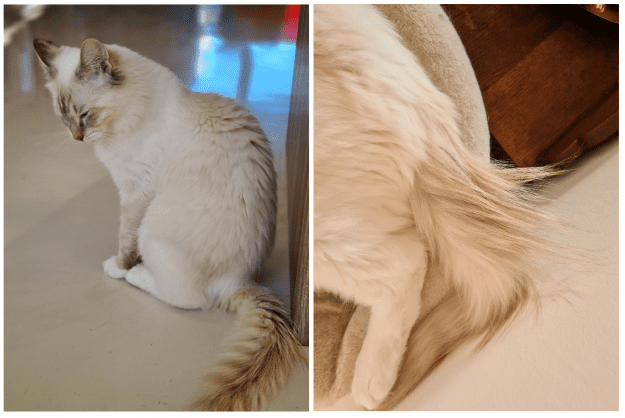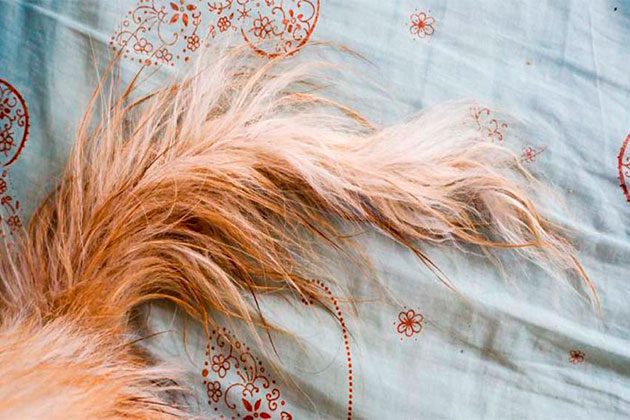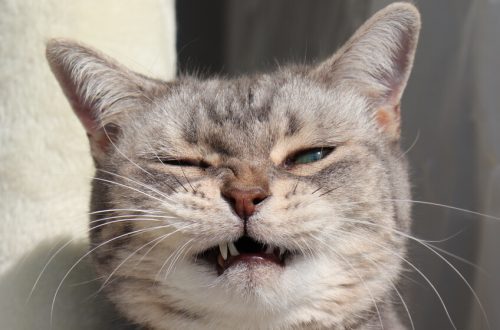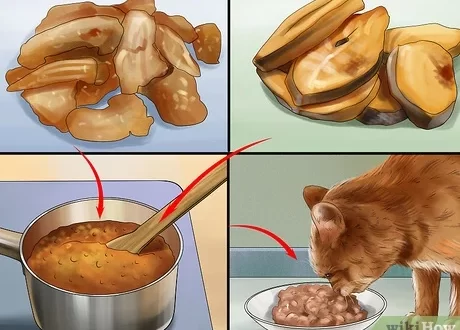
په پیشو باندې غوړ شوی لکۍ؟

کړی
Functions of the sebaceous glands
- Protective. Forms a layer on the skin that protects against the effects of damaging factors and pathogenic microflora.
- Hydration. Lubricates and nourishes the skin and coat.
The function of the apocrine glands
This type of external secretion glands is similar to human sweat glands. It performs a lubricating, thermoregulatory, protective function and others.
Signs of hyperplasia of the sebaceous glands
This problem is often only a cosmetic defect, however, under certain circumstances, it can develop into a serious dermatological pathology. Symptoms:
- The coat at the base of the tail, sometimes along the entire length and on other parts of the body looks greasy, as if oiled.
- Wool sticky.
- Seborrhea (dandruff) may be present.
- Also on the tail, and other parts of the body – the back and chin, comedones (black dots), acne can be found.
- د پوستکي سوروالی.
- Crusts.
- Thickening, inflammation of the skin.
- The appearance of atheromas – cysts of the sebaceous glands.
- Pyoderma is a bacterial and fungal overgrowth.
- Animal anxiety, excessive licking.
- خارښ
One animal may show both all of the above signs, and only the first two.
لاملونه
According to global statistics, mostly non-neutered cats suffer. In cats and neutered cats, the disease is much less common. The exact causes of sebaceous hyperplasia are not known.
د وړاندیز کولو عوامل
● Poor living and feeding conditions. ● Lack of grooming and skin care from both the cat and the owner. ● Puberty. ● Concomitant skin diseases. ● Reduced immunity. ● Violation of the function of the sebaceous and apocrine glands, due to which they secrete an excessive amount of secretion and can become blocked from the duct. ● Allergic reactions.
د تشخيصولو
Usually, the diagnosis of sebaceous gland hyperplasia can be made quite easily by collecting only an anamnesis and conducting an examination. But if there are complications in the form of inflammation, comedones, then diagnostics will be required: skin scrapings to exclude parasites, the study of the cellular composition of the skin surface and seals, supposed atheromas. Blood tests are usually not required. The connection of the sebaceous tail with hormonal disorders was also not revealed.
Treatment by veterinarians
Therapy is aimed at eliminating a cosmetic defect, relieving inflammation, if any. If large atheromas are present, they are surgically removed and sent for histological examination to accurately confirm the diagnosis. If the problem is caused by high hormone levels, the doctor will recommend castration or other procedures. In the event that the anal glands are to blame, they can be washed or emptied manually. If the disease recurs regularly, the veterinarian will teach the owners of the cat to do it at home. In chronic or severe disease, surgery to remove the glands may be recommended. Also, the brightness of the symptoms of a greasy tail may decrease or disappear altogether if castration is performed. But, unfortunately, no one can give a 100% guarantee. With severe inflammation and seeding with secondary microflora, systemic antibiotics and antimycotics are used. To prevent the cat from licking its tail, when relieving acute symptoms, it is recommended to wear a protective collar around the neck. Excessive washing of the tail is not indicated, as it can lead to the opposite effect – increased sebum production. Veterinarians recommend washing the tail once every three to seven days. Depending on the symptoms and clinical picture, different shampoos may be recommended:
- With benzoyl peroxide (Doctor) to reduce acne symptoms and remove excess sebum. Additionally, it may be recommended to use Baziron AS 2,5% gel
- Shampoo with 4-5% Chlorhexedine (Pchelodar, Apicenna) to suppress secondary microflora and relieve inflammation.
A dermatologist may recommend using one cleanser, or a combination of them, alternating. How to wash the greasy hair on the tail: In addition to the above medicinal shampoos, folk remedies that are especially popular with breeders include: ● White clay. Masks are made from it for 15-20 minutes. ● Fairy. Surprisingly, dishwashing detergent has a fairly good and lasting effect. Breeders note that the coat remains clean for 5-7 days. However, we must warn that there may be an individual intolerance reaction and before use it is necessary to weigh the pros and cons well. ● The use of dry powder shampoos helps to temporarily remove excess oil from the coat.
د ناروغۍ مخنیوی.
Compliance with high-quality pet care, good food, living conditions, preventive treatments against parasites are the key to a cat’s health. If there is already a problem in the form of hyperplasia of the sebaceous glands and the animal does not have breeding value, it is better to castrate it. Also periodically use skin care cosmetics to reduce the intensity of symptoms.





